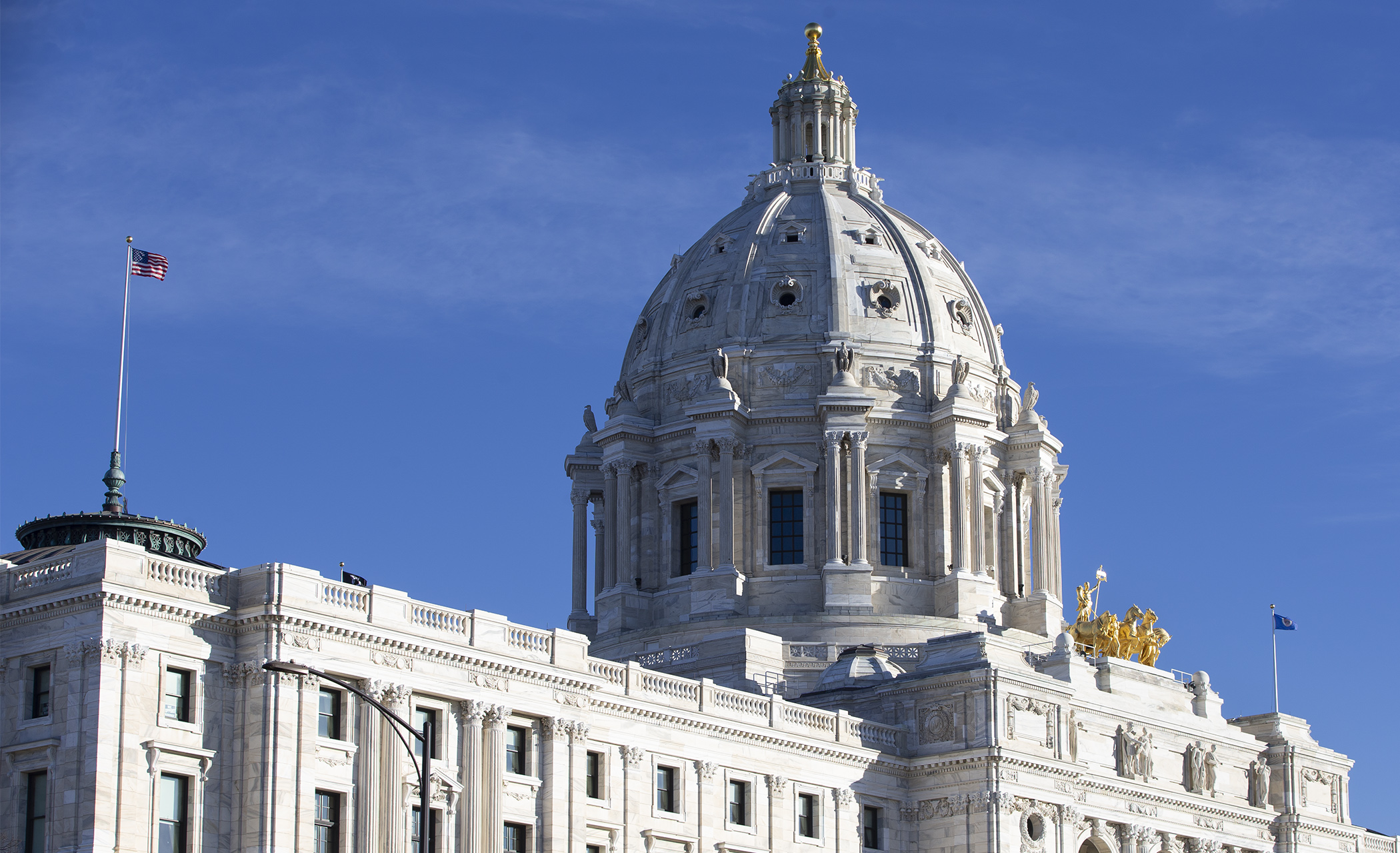Walz unveils record $2.73 billion capital investment proposal

Gov. Tim Walz has a simple message for legislators wanting to put together a capital investment package this year: Go big.
To preserve the past, meet current needs and build a stronger future, Walz unveiled his $2.73 billion Local Jobs and Projects Plan Tuesday. It includes $2 billion in general obligation bonds, $276 million in General Fund spending and $250 million in appropriation bonds.
“In 2020, we passed the largest jobs bill in state history, investing in the projects that local communities told us matter most to them. Now, with Minnesota’s strong economic outlook, we have an opportunity to make even more progress,” Walz said in a statement. “With a focus on projects like roads, bridges, fire stations, and veterans homes, our plan will repair and replace critical infrastructure and improve the lives of Minnesotans in every corner of the state.”
The 2020 law totaled $1.9 billion. No traditional capital investment package received legislative support in 2021; however, a law was passed to amend prior appropriations of general obligation bonds and authorize a conveyance of state-bond financed property.
Nearly $5.5 billion in requests were received for 2022: $4 billion from state agencies and approximately $1.5 billion from local units of government.
[MORE: Requests and recommendations for state agencies and local units of government]
Expenditures in the proposal include:
- more than $1 billion in asset preservation, including $260.2 million to repair and replace buildings in the University of Minnesota and Minnesota State systems and $111 million for the Department of Natural Resources;
- $750 million for climate mitigation projects;
- $250 million for housing infrastructure;
- $200 million in local water infrastructure grants and loans;
- $120 million for local bridge replacements;
- $90 million for local road improvement projects;
- $72 million for new and renovated space for the university’s chemistry program on the Minneapolis campus;
- $58.13 million in Corrections Department asset preservation;
- $46.4 million in Capitol Complex security upgrades;
- $12 million for infrastructure investments at Spirit Mountain in Duluth;
- $12 million to recondition the Hennepin Avenue Suspension Bridge in Minneapolis and two approach bridges;
- $8 million to renovate the Minnesota Zoo’s animal hospital;
- $3 million to construct a 50-meter outdoor pool in Cottage Grove as part of the future community center;
- $1 million for grants to local communities to upgrade ice arenas, primarily through replacing refrigerant and improving air quality;
- $890,000 for restoration design of the 115-year-old Batcher Block Opera House in Staples that is listed on the National Register of Historic Places; and
- $527,000 to construct a warming house/community center in Aitkin.
[MORE: 2022 capital budget map]
“In communities throughout Minnesota, there is an immense need for investment in local projects and resources that bring jobs and opportunities to the region, especially when it comes to investing in marginalized Minnesotans and addressing our state’s housing crisis," Rep. Fue Lee (DFL-Mpls) said in a statement. He chairs the House Capital Investment Committee, which pans to hear the governor’s plan Feb. 4.
Lee's statement continued: "The recommendations put forward by the governor do just that, setting the stage for a historic investment in equity-focused projects and providing more Minnesotans with a safe and secure place to call home.”
The website for Minnesota Management and Budget states: “Minnesota's capital budget is primarily funded by issuing state general obligation bonds. Items funded in capital budgets often include land acquisition, repair, renovation and construction of state facilities; and acquisition, construction and repair of state parks, trails, interpretive centers, campground facilities, forests, wildlife management areas, dams and flood control structures.
“Capital budgets also include grants to local governments for repair and construction of schools, parks, bridges and waste-water treatment facilities. Historically, major capital budget bills have been passed in even-numbered years.”
Bonding bills require a three-fifths supermajority to pass in the House and Senate, meaning bipartisanship is a must.
Related Articles
Search Session Daily
Advanced Search OptionsPriority Dailies
Ways and Means Committee OKs proposed $512 million supplemental budget on party-line vote
By Mike Cook Meeting more needs or fiscal irresponsibility is one way to sum up the differences among the two parties on a supplemental spending package a year after a $72 billion state budg...
Meeting more needs or fiscal irresponsibility is one way to sum up the differences among the two parties on a supplemental spending package a year after a $72 billion state budg...
Minnesota’s projected budget surplus balloons to $3.7 billion, but fiscal pressure still looms
By Rob Hubbard Just as Minnesota has experienced a warmer winter than usual, so has the state’s budget outlook warmed over the past few months.
On Thursday, Minnesota Management and Budget...
Just as Minnesota has experienced a warmer winter than usual, so has the state’s budget outlook warmed over the past few months.
On Thursday, Minnesota Management and Budget...